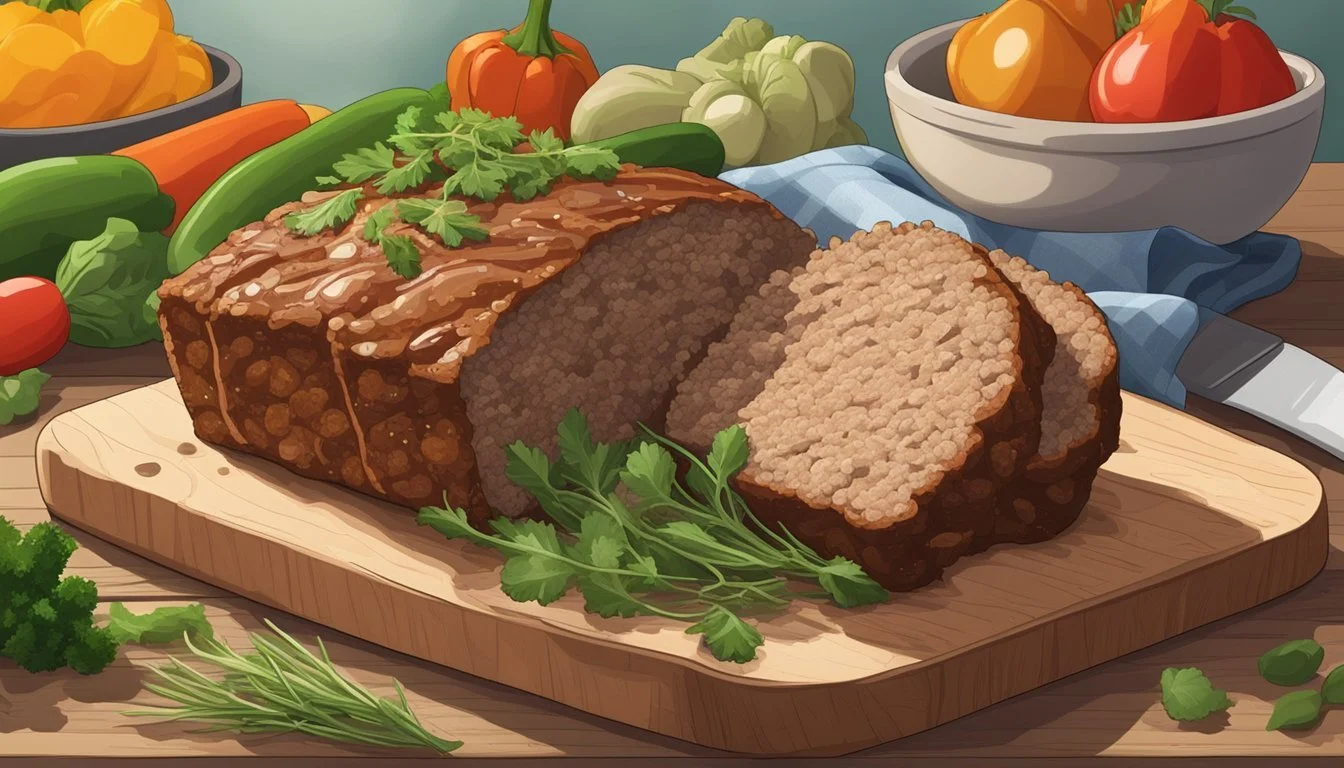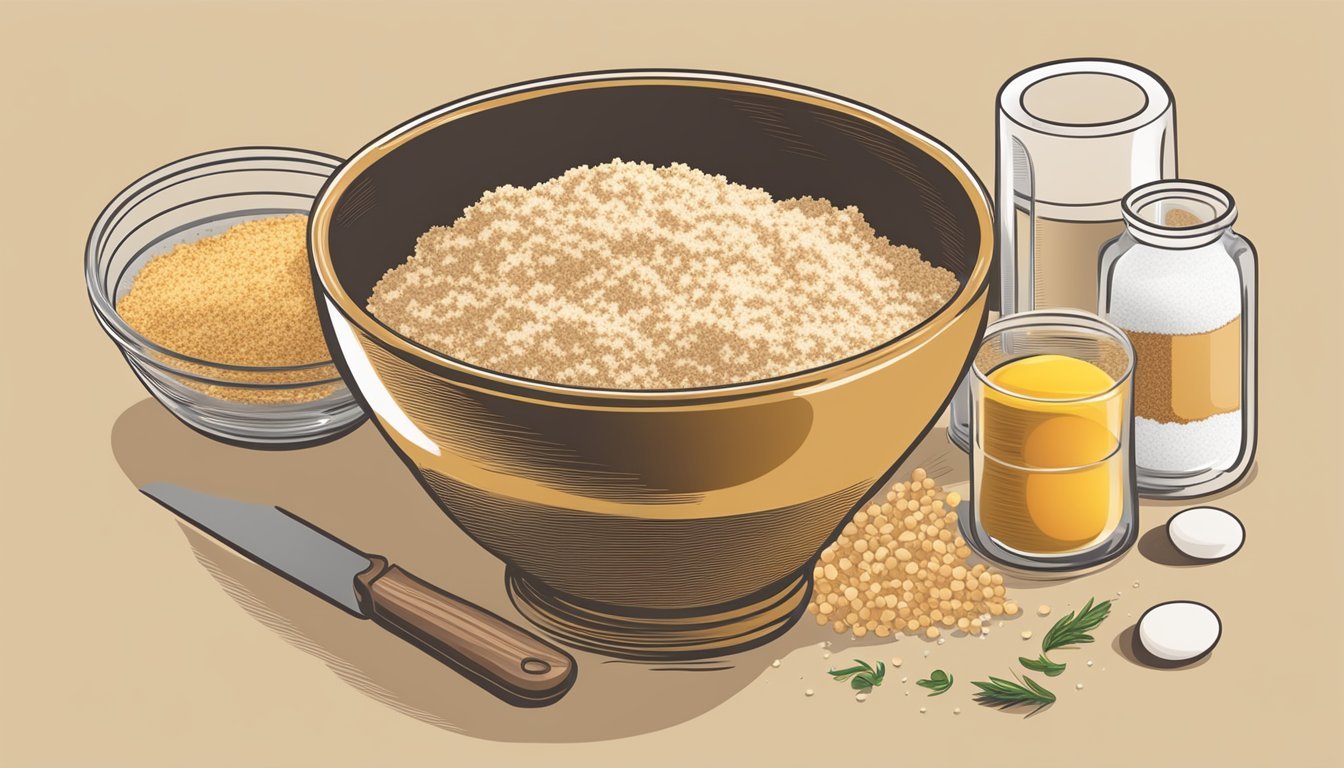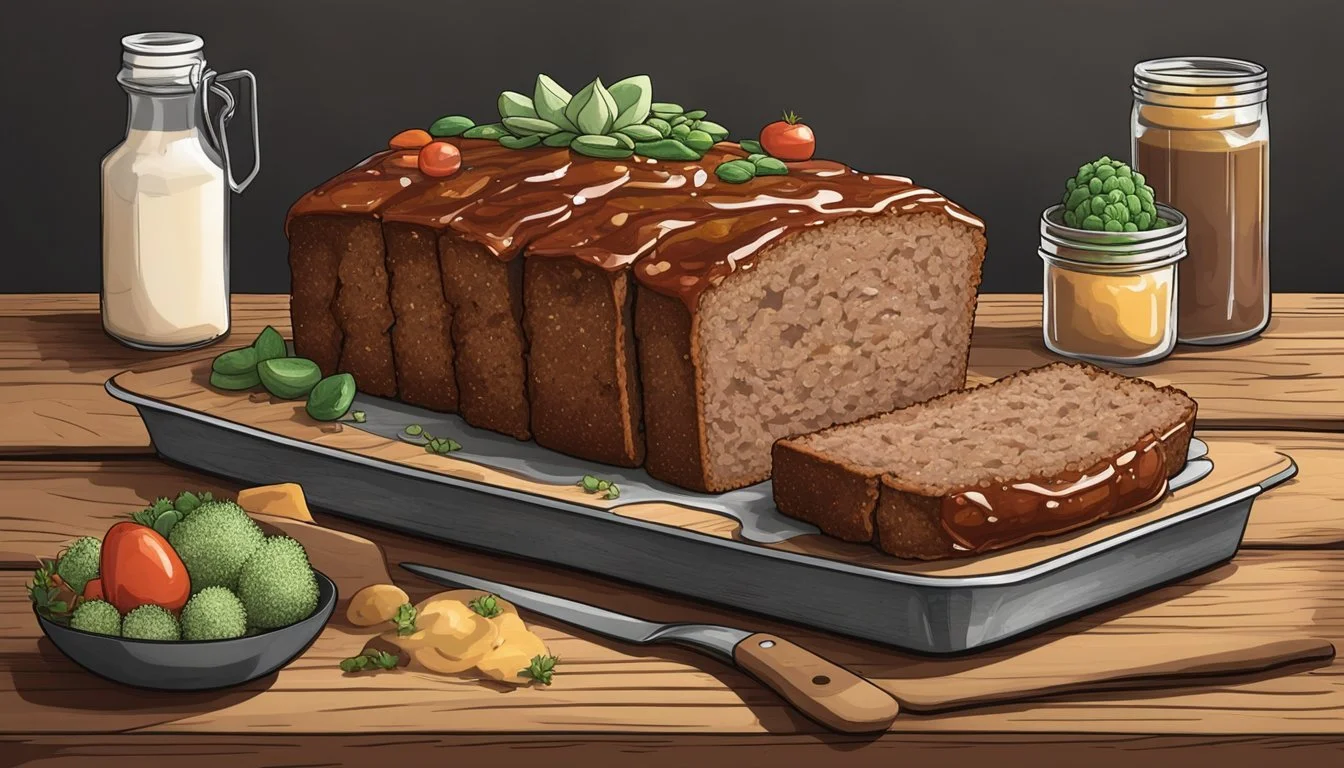Is Meatloaf Gluten-Free?
Understanding Ingredients and Preparation Methods
Meatloaf, a staple in American cuisine, is renowned for its savory blend of ground meat and seasonings, often seen as the quintessence of comfort food. While traditionally this dish includes ingredients such as breadcrumbs, which contain gluten, the increasing awareness of gluten-related disorders has led to the adaptation of meatloaf recipes to fit a gluten-free diet. It's critical to note that meatloaf is not inherently gluten-free due to these conventional ingredients.
However, the necessity for gluten-free alternatives has never been higher, prompting many cooks and recipe developers to seek out suitable substitutes that maintain the texture and flavor meatloaf lovers expect. Ingredients such as gluten-free oats, breadcrumbs, or almond flour can be used as binding agents in place of their gluten-containing counterparts. Additionally, additives like Worcestershire sauce and ketchup used for flavor must be chosen carefully; gluten-free options of these condiments are essential in ensuring the dish is safe for those with gluten sensitivities.
When preparing meatloaf for individuals who follow a gluten-free diet, meticulous attention to ingredient labels is paramount. Cross-contamination with gluten-containing products is also a concern that must be addressed. Catering to such dietary restrictions does not necessitate a compromise in taste or comfort—the essence of this beloved dish can be preserved and enjoyed by all, with the correct precautions and recipe modifications.
Understanding Gluten in Meatloaf
When preparing meatloaf, it's essential to be cognizant of the gluten content in various ingredients to cater to those with gluten sensitivities. This section dissects the presence of gluten in traditional meatloaf and discusses alternatives for a gluten-free version.
What Is Gluten?
Gluten is a group of proteins found predominantly in wheat, barley, and rye. It gives elasticity to dough, helping it rise and keep its shape, with the final product having a chewy texture. Individuals with celiac disease or gluten intolerance must avoid gluten to prevent adverse health effects.
Common Sources of Gluten in Meatloaf
Traditional meatloaf recipes often include ingredients that are sources of gluten. The primary offenders are:
Breadcrumbs: used as a binder in meatloaf, typically made from wheat.
Sauces: some sauces like Worcestershire sauce may contain gluten.
Seasoning Mixes: these can have gluten-containing additives.
Understanding which ingredients harbor gluten helps in effectively replacing them for a gluten-free meatloaf.
Gluten-Free Alternatives
To make a gluten-free meatloaf, one must carefully select all the ingredients. Key replacements include:
Gluten-Free Breadcrumbs: either store-bought or homemade from gluten-free bread.
Oats: can be used as a binder; ensure they’re labeled gluten-free to avoid cross-contamination.
Gluten-Free Worcestershire Sauce: check the label for a gluten-free certification.
Substituting these elements ensures the meatloaf remains cohesive and flavorful without the addition of gluten.
Essential Ingredients for Gluten-Free Meatloaf
Creating a gluten-free meatloaf requires careful selection of ingredients to ensure that the dish is safe for those with gluten sensitivities, while still delivering the classic taste and texture of traditional meatloaf.
Choosing the Right Meat
The foundation of any meatloaf is the meat itself. For a gluten-free version, one can use lean ground beef or ground turkey (What wine goes well with turkey?). Lean ground beef is preferred for its lower fat content and ability to bind well with other ingredients without becoming too greasy.
Lean Ground Beef: Opt for at least 90% lean meat.
Ground Turkey: A lighter alternative with a lower fat content.
Gluten-Free Binders
Binders are crucial for providing the meatloaf with structure and preventing it from falling apart. Traditional meatloaf often uses breadcrumbs, which contain gluten, so alternatives are necessary.
Eggs: Serve as a gluten-free binder that holds the meatloaf together.
Gluten-Free Bread Crumbs or Oat Flour: Can mimic the texture provided by traditional breadcrumbs.
Gluten-Free Binders Purpose Eggs Act as a binder to hold the loaf together Gluten-Free Bread Crumbs Provide texture without adding gluten Oat Flour Another alternative to traditional bread crumbs, ensuring cohesion
Flavor Enhancers and Seasonings
Gluten-free meatloaf should not compromise on flavor. A combination of seasonings and enhancers brings depth and savoriness to the dish without introducing gluten.
Gluten-Free Worcestershire Sauce: Adds umami without gluten.
Ketchup and Mustard: These condiments add tanginess and moisture.
Onion and Garlic: Provide a robust base flavor.
Salt and Pepper: Fundamental seasonings for any meatloaf.
Flavor Enhancers and Seasonings Role in Meatloaf Gluten-Free Worcestershire Sauce Adds depth and a savory umami kick Ketchup Contributes sweetness and moisture Mustard Introduces tang and spice Onion and Garlic Offer foundational aromatic notes Salt and Black Pepper Enhance overall flavor Herbs like Thyme and Parsley Imbue freshness and complexity
In each subcategory, the ingredients should be measured and added with precision to create a well-balanced gluten-free meatloaf that is moist, flavorful, and cohesive, while strictly adhering to a gluten-free diet.
Preparing the Meatloaf Mixture
When preparing gluten-free meatloaf, the mixture's consistency and ingredient choice play pivotal roles in attaining the perfect texture and flavor. Precise mixing and careful preparation before baking will yield a delicious, gluten-free meatloaf.
Mixing Ingredients
The initial step in preparing gluten-free meatloaf involves combining the right balance of ingredients to ensure both flavor and structural integrity. Typically, one starts with a base of lean ground beef or ground turkey. To this, the cook adds a binding agent, such as an egg, which helps to hold the loaf together. Gluten-free condiments like ketchup and mustard incorporate tanginess, while vegetables like onions, zucchini, and carrots contribute moisture and flavor.
Here is a basic ingredient structure to follow:
Protein: 1-1.5 pounds ground beef or turkey
Binding Agent: 1 large egg
Vegetables: 1/2 cup each of finely chopped onion, grated zucchini, and grated carrot
Seasonings: Salt, pepper, and custom seasonings to taste
Gluten-Free Binder: Gluten-free breadcrumbs or a substitute like sautéed mushrooms or cooked quinoa
The cook should mix these ingredients gently to avoid overworking the mixture, which could result in a dense meatloaf. It's important to ensure that the binding ingredients are evenly distributed throughout the meat to ensure that the loaf will hold its shape during and after baking.
Shaping and Baking Tips
After mixing, the meatloaf is ready to be shaped and baked. Shaping can be done directly in a lightly greased loaf pan or on a parchment paper-lined baking sheet if one prefers a freeform loaf. Using parchment paper is advisable as it prevents sticking and eases cleanup.
Loaf Pan: Lightly grease the pan, then press the mixture in, smoothing the top. Optionally, line with parchment for easier removal.
Baking Sheet: Form the mixture into a loaf shape with consistent thickness to promote even cooking.
Before shaping the meatloaf, preheat the oven—commonly to 350°F (175°C), which cooks the meatloaf thoroughly without burning the exterior. Covering the meatloaf with aluminum foil can prevent the top from getting too dark before the interior is fully cooked.
The meatloaf should bake until it reaches the safe internal temperature for ground meats, which is 160°F (71°C) for beef and pork, and 165°F (74°C) for turkey, as verified by a meat thermometer. Baking times can vary, typically ranging from 50 to 60 minutes, depending on the size and thickness of the loaf.
Cooks may opt to add a glaze such as gluten-free ketchup or barbecue sauce during the final 15 minutes of baking, ensuring a flavorful, caramelized crust without burning it.
Tasty Gluten-Free Meatloaf Glazes and Toppings
A central component to a delectable meatloaf is the glaze, which adds both moisture and flavor. This section explores gluten-free options for those quintessential meatloaf toppings.
Understanding Glazes
The glaze for gluten-free meatloaf serves two main functions: it adds a tangy, sweet layer that compliments the savory flavors of the meat, and it keeps the meatloaf moist during baking. A typical glaze consists of a base, usually gluten-free ketchup, combined with sweet and tangy elements such as brown sugar and apple cider vinegar. Some chefs may opt for using a gluten-free barbecue sauce as the foundation for their glaze to impart a smoky flavor.
Common Glaze Ingredients:
Base: gluten-free ketchup or barbecue sauce
Sweetness: brown sugar or honey
Acidity: apple cider vinegar or mustard
Recipe Variations for the Glaze
When considering a glaze for gluten-free meatloaf, one is presented with several delicious possibilities. The following variations provide a diversity in flavor profiles:
Traditional Ketchup Glaze:
Gluten-free ketchup: 1 cup
Brown sugar: 2 tablespoons
Apple cider vinegar: 1 tablespoon
Mix and brush over meat before baking
Barbecue Twist:
Gluten-free barbecue sauce: 1 cup
Brown sugar: 1 tablespoon
Mix and apply a generous layer over the meatloaf
For each glaze, simply combine the ingredients and spread them over the meatloaf before it goes into the oven. The glaze should be applied in a thick layer to prevent drying out and to maximize flavor.
Cooking and Serving Gluten-Free Meatloaf
Crafting a gluten-free meatloaf necessitates specific methods to ensure both safety for those with gluten intolerance and the deliciousness of the dish. Precision in temperature, choice selection of gluten-free ingredients, and appropriate side dishes are vital to an enjoyable meal.
Determining Doneness
To determine if a gluten-free meatloaf is fully cooked, one should ensure the internal temperature reaches 160°F. A meat thermometer inserted into the thickest part of the meatloaf will provide an accurate reading. It is crucial to avoid undercooking to prevent health risks associated with raw meat.
Side Dish Pairings
For a balanced meal, serve the gluten-free meatloaf with a variety of side dishes. Mashed potatoes, made with butter and cream or a dairy-free option, make for a classic pairing. Steamed or sautéed green beans, seasoned with garlic and almond slivers, add a nutritious and flavorful touch. Other gluten-free side options include:
Roasted root vegetables
Quinoa salad
Brown rice pilaf
Serving Suggestions
When serving gluten-free meatloaf, one can enhance its flavors with a rich gluten-free gravy. To plate, slice the meatloaf and drizzle with gravy, or serve the gravy on the side for dipping. As always, when serving individuals with gluten sensitivities, all components on the plate must be verified gluten-free to avoid cross-contamination.
Dietary Considerations and Variations
For individuals with dietary restrictions such as celiac disease or dairy intolerance, traditional meatloaf that contains breadcrumbs or milk may not be suitable. Meatloaf can be adapted to be gluten-free or dairy-free without compromising on flavor or nutrition.
Dairy-Free Meatloaf Options
To cater to dairy-free diets, it's essential to swap out any dairy ingredients commonly found in meatloaf recipes. Traditional recipes might call for milk, which can be readily substituted with dairy-free milks such as almond milk, soy milk, or coconut milk. These alternatives provide the necessary moisture without adding dairy to the dish. Moreover, be vigilant about other ingredients that may contain dairy derivatives and opt for certified dairy-free options when available.
Moisture: Use dairy-free milk (i.e., almond, soy, coconut) instead of cow's milk.
Binding: Choose dairy-free cheeses or breadcrumbs if needed to bind the mixture.
Non-Beef Meatloaf Varieties
For those avoiding beef due to dietary preferences or restrictions, meatloaf can be made with a variety of other ground meats. Ground turkey is a popular choice for a leaner, often more nutritious alternative. Incorporating vegetables such as grated carrot into the meatloaf not only boosts the nutrition but also maintains the moisture and enhances the flavor profile.
Meat Alternatives: Utilize meats like ground turkey for a lighter version.
Flavor and Nutrition: Add shredded carrot for added nutrition and natural sweetness.
Recipes designed for gluten-free and dairy-free dietary needs not only cater to those with specific food intolerances but can also offer more diverse flavors and nutritional profiles, creating healthful and enjoyable variations on the classic meatloaf.
Storing and Reheating Gluten-Free Meatloaf
When it comes to preserving the flavor and texture of gluten-free meatloaf, proper storage and reheating techniques are essential. These guidelines ensure that the meatloaf retains its quality and is safe for consumption.
Storing Leftovers
To store leftovers, one should allow the gluten-free meatloaf to cool completely. Once at room temperature, it can be transferred to an airtight container and stored in the refrigerator. The meatloaf should be consumed within 3-4 days for optimal taste and safety.
Freezing and Thawing Procedures
For longer storage, gluten-free meatloaf can be frozen. Here’s how to properly freeze and thaw it:
Cool: Ensure the meatloaf has cooled entirely before freezing to maintain texture.
Wrap: Tightly wrap individual slices or the entire loaf in plastic wrap, followed by aluminum foil or place them in a freezer-safe container.
Label: Note the date on the packaging for quality tracking.
Freeze: Store in the freezer for up to 3 months.
Thaw: When ready to enjoy, one should thaw the meatloaf in the refrigerator overnight to prevent bacterial growth.
Reheating for Best Quality
Reheating gluten-free meatloaf correctly is key to enjoying a meal that is as close to the original as possible. Here’s a method for reheating:
Preheat the oven to 350°F (175°C).
Place the meatloaf slices on a baking tray lined with parchment paper.
If desired to maintain moisture, one can add a small amount of water or drizzle with a bit of gluten-free hot sauce for additional flavor.
Cover with foil to prevent drying out.
Heat for 20-25 minutes or until the internal temperature reaches 165°F (74°C).
Conclusion
Gluten-free meatloaf is a wholesome alternative to the classic meatloaf, providing the same comforting experience without the presence of gluten. This makes it suitable for those with gluten sensitivities or celiac disease. A traditional recipe can be easily adapted to be gluten-free by substituting breadcrumbs and other gluten-containing ingredients with gluten-free alternatives.
The key to a successful gluten-free meatloaf lies in careful selection of ingredients. Lean protein sources, such as ground beef or turkey, are the foundation of any meatloaf, contributing both texture and rich flavor. To bind the ingredients without gluten, one can opt for gluten-free breadcrumbs or oats and use eggs as a binding agent.
For those seeking a simple and easy-to-make dish, gluten-free meatloaf fits the bill perfectly as it often follows a straightforward recipe. With the right gluten-free products, it can provide a substantial amount of protein and can be a part of a balanced meal with relatively moderate calories.
To make gluten-free meatloaf:
Start by preheating the oven and preparing a loaf pan with parchment paper for easy removal.
Mix the chosen lean protein with gluten-free binders, seasonings, and vegetables for added moisture and nutrition.
Apply a glaze if desired, using gluten-free ketchup or a homemade mixture.
Bake as directed, ensuring a fully cooked and juicy internal texture.
Gluten-free meatloaf recipes vary, but the core principles remain the same. It serves as an easy weeknight meal that is satisfying, nutritious, and maintains the essence of a traditional meatloaf. Whether following a specific recipe or creating a personalized version, gluten-free meatloaf is a testament to the versatility and adaptability of this classic dish.







